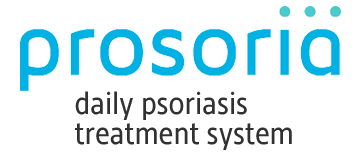
According to the National Psoriasis Foundation, psoriasis impacts nearly 8 million people --more than 3% of the U.S. population. Psoriasis, an autoimmune condition, occurs when skin cells multiply too fast, leading to rashes, cracked skin, and even heart problems. Psoriasis can be found on many parts of the body, including the back, neck, arms, legs, fingers, toes, scalp, and genitals. However, one of the most common types of psoriasis is leg psoriasis.
In this article, we’ll explain the basics of leg psoriasis, answering questions including:
- Is Leg Psoriasis Different from Other Types of Psoriasis?
- What are the Different Types of Leg Psoriasis?
- What are the Triggers for Leg Psoriasis?
- Are There Treatments for Leg Psoriasis?
Is Leg Psoriasis Different from Other Types of Psoriasis?
Leg psoriasis is not a specific disorder in itself. In fact, leg psoriasis is simply one or more of the several known types of psoriasis that has manifested itself on the legs. Experiencing psoriasis on the legs, however, can be especially debilitating. Leg psoriasis can manifest on all parts of the legs, including the front thighs, hamstrings (rear thigh), buttocks, calves, knees, and shins. It can also manifest in the folds of the skin in or around any of these areas. Leg psoriasis on the shins can be one of the slowest to respond to treatment and cause a high level of itching. Knees can also be troublesome as they are always rubbing on clothing or surroundings which often stimulates thicker plaques
Specific symptoms of leg psoriasis can include:
- • Pain while sitting, walking, exercising, bathing, and putting on clothing
- • Chafing, especially in humid climates or when wearing irritating fabrics
- • Additional rashes, beyond that of typical psoriasis symptoms
To contrast, general psoriasis symptoms to be aware of (on the legs or elsewhere) include:
- • Cracked, dry skin
- • Bleeding, soreness, or itching (or all three)
- • Thick, silvery scales over areas of reddened skin
- • Stiff and swollen joints
- • Pitted or thickened nails
What are the Different Types of Leg Psoriasis?
As we just mentioned, leg psoriasis is not a specific subtype of psoriasis. This means that it could be any one of the major types of psoriasis, including:
- Plaque psoriasis: Plaque psoriasis, or psoriasis vulgaris, is the most common type of psoriasis, so this is the most likely culprit for those who are experiencing psoriasis on the legs.It is usually characterized by dry scaly patches and reddened raised areas. About 80% of all psoriasis sufferers have been diagnosed with this type of psoriasis.
- Inverse psoriasis: Inverse psoriasis generally manifests itself as bright red, purple, or brown spots. They are generally smooth and shiny, and not scaly, unlike plaque psoriasis. Inverse psoriasis can appear on many areas of the body but generally appears under the folds of the skin, such as under the buttocks or thighs, under the breasts, or on the groin. Sweating, friction, and rubbing are some of the most potent inverse psoriasis triggers, making good clothing choices essential.
- Pustular psoriasis: Pustular psoriasis is one of the rarer types of psoriasis, and typically manifests itself as pus-filled bumps. Common symptoms include muscle weakness, increased heart rate, chills, fever, and nausea. Triggers can include getting too much UV light exposure without protection, stress, pregnancy, and stopping a steroid regimen. It can also occur on the bottom of feet and palms.
- Guttate psoriasis: Guttate psoriasis is a rare type of psoriasis that typically causes small, reddish skin spots. It often starts in younger people, including children, but often goes away within a few weeks. Guttate psoriasis often manifests itself on the legs and thighs, as well as the chest, back, and scalp. It's often triggered by a bacterial infection or virus.
- Erythrodermic Psoriasis: Like guttate psoriasis, erythrodermic psoriasis is one of the rarer types of psoriasis, impacting only 2% of psoriasis sufferers. However, it can be extremely dangerous. Large, scaly sections of skin that flake off, fever, and swelling of the limbs can be signs of a flare-up. This type of psoriasis often impacts the entire body and can lead to pneumonia, infections, and even heart failure. For this reason, people who believe they may be experiencing erythrodermic psoriasis should immediately check themselves into a hospital.
It is important to realize that it’s possible for a psoriasis patient to experience more than one type of psoriasis simultaneously. This applies to both the legs and other parts of the body. For example, someone could both be experiencing plaque psoriasis on the front of their thighs, while at the same time suffering from inverse psoriasis on their buttocks or inner thighs.
What are the Triggers for Leg Psoriasis?
The specific triggers for leg psoriasis depend on the exact type of psoriasis the individual is suffering from.
Common triggers for psoriasis, including psoriasis on the legs, include:
- • Stress
- • Allergies
- • Medications
- • Diet
- • Skin injury
- • Infections
- • Weather
Specific drugs that can also trigger psoriasis flare-ups include:
- • Quinidine
- • Lithium
- • Inderal
- • Antimalarial drugs
- • Indomethacin
Psoriasis flare-ups can also be triggered by suddenly stopping a psoriasis treatment, such as topical steroids or oral steroids. Patients may opt to pause these medications due to side effects such as weight gain or skin thinning, but this can often lead to a significant rebound in symptoms.
Are There Treatments for Leg Psoriasis?
There are a variety of treatments for each type of psoriasis, regardless of where it occurs on the body. Common treatments include both prescription and over-the-counter (OTC) options, with many individuals opting to use a combination of treatments.
Some of the most used psoriasis treatments include steroid creams, immunosuppressants, and specialized vitamins (such as A and D). Phototherapy and laser therapy are also becoming more popular as more patients experience the benefits of these treatments. UVB therapy, for example, has been shown to slow down the growth of skin cells in psoriasis patients, slowing down the spread of rashes during flare-ups.
Other treatments include biologics, which are prescription medications created from living organisms. Typically administered by injection these drugs are often reserved for patients with more serious cases of psoriasis.
In some cases, however, lifestyle changes can make an even bigger impact than drugs. One study of overweight psoriasis patients showed that adhering to a healthy diet and regular exercise regimen significantly reduced psoriasis symptoms.
In general, experts recommend eating an anti-inflammatory diet to reduce psoriasis symptoms. Some patients also find that eliminating certain foods or food types can reduce symptoms. Inflammatory foods that people may consider eliminating from their diet include refined sugars, red and processed meats, and foods containing artificial ingredients, such as dyes and binding ingredients. Alcohol can also be a powerful psoriasis trigger. Reducing consumption or eliminating it from your diet can be helpful.
In addition, some people find that reducing or eliminating gluten may reduce psoriasis symptoms. Gluten, a protein found in a variety of grains, including wheat, can be particularly dangerous for those who face celiac disease or other gluten allergies. Some people who suffer from psoriasis may also face these conditions. In this case of co-occurring psoriasis and celiac disease, reducing the intensity of celiac disease/gluten allergy symptoms may reduce overall stress. Therefore, cutting out gluten could reduce the intensity of the patient’s overall psoriasis outbreaks.
Stress reduction can also play a role in reducing psoriasis breakouts. One study showed that psoriasis patients who participated in meditation-based stress reduction sessions had their psoriasis clear up much faster after phototherapy treatment than those who did not. Another study showed that art therapy also has significant potential to reduce symptoms for psoriasis patients.
In addition to meditation or art therapy, psoriasis patients may also wish to reduce stress by:
- • Spending more time with family and friends
- • Spending more time in nature
- • Making progress toward achieving a better work-life balance
- • Engaging a healthy hobby
- • Taking fish oil and Turmeric
What Clothing Should I Wear for Leg Psoriasis?
Leg psoriasis can be especially painful when it comes to wearing clothing. In general, it’s recommended that people with psoriasis wear loose clothing. Typically, that means jeans and tight slacks are out of the picture. Many psoriasis sufferers find relief from avoiding synthetic fabrics, like nylon, as well as heavier fabrics like wool.
Cotton is commonly recommended, as it’s generally less likely to cause skin irritation. Some people may prefer to wear a cotton undershirt, cotton leggings, or cotton tights underneath their clothing for an additional layer of protection. Other fabrics that may be helpful include silk and modal, a type of organic rayon that’s developed from wood pulp.
Many people who have leg psoriasis also find themselves experiencing psoriasis on the feet and ankles. Just like dealing with psoriasis on other parts of the body, wearing comfortable, loose-fitting shoes, as well as thin, cotton socks, can reduce pain.
In addition to ensuring their clothing isn’t adding to their symptoms, people with psoriasis on their legs or other parts of their bodies should pay close attention to their sleep hygiene. Just as with clothing, cotton and other moisture-wicking fabrics are recommended for sheets, pillows, and mattress covers. Bedroom temperature and humidity can also be important factors, so all efforts should be made to keep bedrooms cool, dry, and free from dust and other particles.
Can Leg Psoriasis Spread to Other Parts of the Body?
No, it can’t. Psoriasis is not an infection, cancer, virus, or allergic reaction (like poison ivy) and does not “spread” to other parts of the body due to contact. Symptoms of psoriasis, like rashes or sores, can manifest on increasing parts of the body’s surface. This may make it seem like the psoriasis is “spreading,” but in reality, an individual’s flare-up is just temporarily getting worse.
For that reason, sufferers of leg psoriasis should not be afraid of their legs touching other parts of their body and do not need to take any precautions to “protect themselves from themselves.”
Is Leg Psoriasis Contagious?
No. Just as psoriasis cannot spread from one part of the body to another, it cannot spread from one person to another. As we mentioned earlier, psoriasis is a genetic immune disorder and is not contagious. However, psoriasis may lie dormant for many years and can be “activated” by stress, reactions to medications, or any of the other triggers mentioned above.
Conclusion: Leg Psoriasis Can Be Tough, But It’s Treatable
As we discussed earlier, leg psoriasis is not a different type of psoriasis-- it’s simply one of the several types of psoriasis that occurs on the legs. Leg psoriasis, however, can be especially challenging due to the fact that it can make exercise, sitting, and sleeping particularly uncomfortable.
Like other types of psoriasis, there are a variety of treatments available, including steroids, phototherapy, biologics, and other prescription drugs. However, if you’re looking for a new way to treat your psoriasis, consider trying Prosoria, an effective , over-the-counter psoriasis treatment kit containing natural ingredients, skin exfoliants and moisturizers that help control inflammation, scaling, flaking, itching and redness.
Prosoria can be used alone or in conjunction with other prescription treatments to reduce symptoms and help treat the underlying issues that cause flare-ups. Click here to learn more and try it today.

